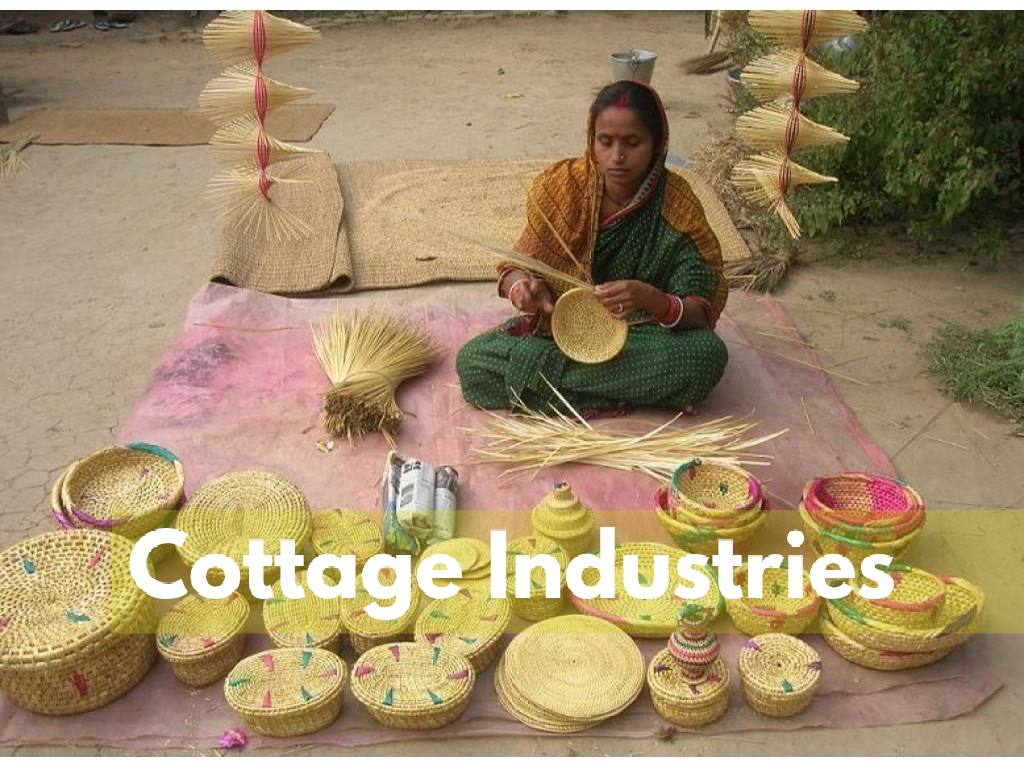Turning the pages of India’s ancient economic history, it becomes clear that the country was rich in agriculture on one hand and equally prosperous in cottage and small-scale industries on the other.

The products manufactured by our industries were in great demand in world markets. As a result, gold, silver, and jewels were flowing into India in exchange for these goods.
Throwing light on the grandeur of India’s ancient industries, Holland states, “India was an industrial nation at a time when the developed Europe of today lived in superstition and was inhabited by wild tribes.
India was known throughout the world for its craftsmanship and industrial products. “Attracted by India’s prosperity, foreigners set foot in the country, and eventually, the British established their rule, making India a slave nation.
Their primary intention was to transfer India’s wealth to England and erase India’s presence from world markets.
To achieve this, the British implemented negative policies that led to the complete destruction of our industries and economic prosperity. Thus, after independence, efforts were made to revive and strengthen small and cottage industries.
The government initiated development programs for these industries as part of economic planning. As a result, significant progress was made in this sector up to 2013-2014.
However, despite these efforts, these industries still face persistent challenges today. In the following discussion, we will first define small and cottage industries and then examine their importance, challenges, potential solutions, and government policies regarding their development.
Small-Scale Industries, Ancillary Industries, Allied Industries, and Cottage Industries (Household Industries) – Meaning
Small-scale industries (enterprises) are defined based on different criteria across countries. In some nations, they are classified based on investment levels, while in others, they are categorized according to employment levels. Thus, the definition of small-scale industries varies depending on the adopted standard.
In Western developed countries, industries are classified based on the number of workers employed in factories, considering labor shortages. India initially followed this Western approach, giving importance to the number of workers while also considering the driving force behind production. However, after the 1960s, small-scale industries in India came to be recognized primarily based on investment levels, as this criterion was more appropriate due to the country’s capital scarcity.
Now, let us examine the definitions of small-scale industries, micro-small enterprises, ancillary industries, and cottage industries.
(A) Small-Scale Industries:
In 1991, when the New Industrial Policy was announced, the investment threshold for small-scale enterprises was revised to ₹60 lakh. Thus, an industrial unit with a fixed capital investment of ₹60 lakh or less in plant and machinery was classified as a Small Enterprise.
Later, based on the recommendation of the Abid Husain Committee, the investment limit was significantly increased to ₹3 crore. Then, in October 2006, due to inflation and currency depreciation, the investment limit for small enterprises was revised from ₹25 lakh to ₹5 crore.
The industries classified under small-scale enterprises include both traditional and modern sectors. Some traditional industries are khadi, village industries, handloom, rope-making, and the silk industry, while modern small-scale industries include hosiery, rubber, plastic, electronics, and computer-related industries.
Since 1977, a separate category called ‘Tiny Industries’ has been introduced under the small-scale industries sector.
(B) Micro-Small Enterprises:
An industrial unit with a fixed capital investment of ₹5 lakh or less was initially classified as an Extremely Small Enterprise. In 1997, the capital limit was increased to ₹25 lakh. This limit was retained in the new classification system introduced in October 2006.
This new class of industry was created with the good intention of supporting numerous industrial units operating with low capital in remote areas, while also prioritizing regional economic development. The goal was to balance population growth with investment, ensuring the expansion of industries into rural areas. Even after 1991, the policy of encouraging this sector has continued.
(C) Ancillary Industries:
Ancillary industries are larger than small-scale enterprises but smaller than large-scale enterprises. Their defining characteristic is that they manufacture spare parts or provide essential services for large industries. These units produce goods specifically to meet the demands of large enterprises, often anticipating their requirements.
Initially, the fixed capital investment limit for ancillary industries was set at ₹75 crore. In 1997, when the investment limit for small-scale industries was increased, the limit for ancillary industries was also raised to ₹3 crore.
(D) Cottage Industries:
Cottage industries are a part of small-scale industries, but due to their unique characteristics, they are classified separately.
Cottage industries are typically family-run businesses, where production is carried out mainly by family members. Since these industries operate from the artisans’ homes or cottages, they are referred to as cottage industries. They are widely spread across rural India, which is why they are also known as village industries. Some examples include the pottery industry, leather industry, carpentry, and blacksmithing.
Cottage industries generally:
- Use traditional production methods
- Utilize local raw materials
- Produce goods mainly for local markets
In contrast, small-scale industries:
- Use both traditional and modern technologies
- Source raw materials from various locations
- Produce goods for both local and distant markets
- Employ a significant number of non-family workers who work for wages
Thus, small-scale, micro-scale, ancillary, and cottage industries have been defined based on their size, capital investment, and operational structure.